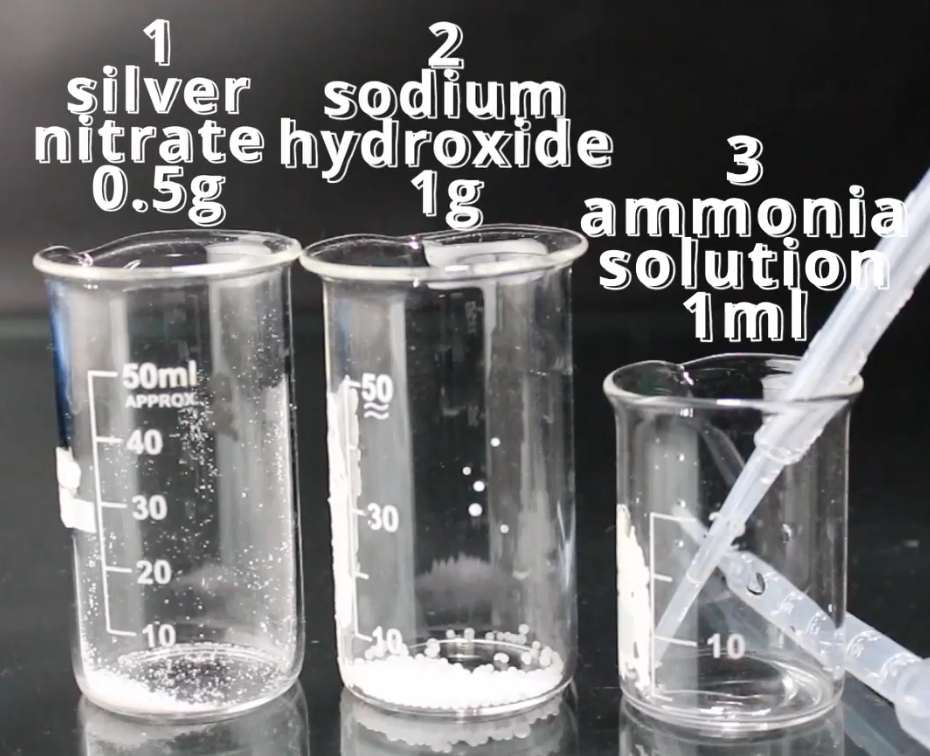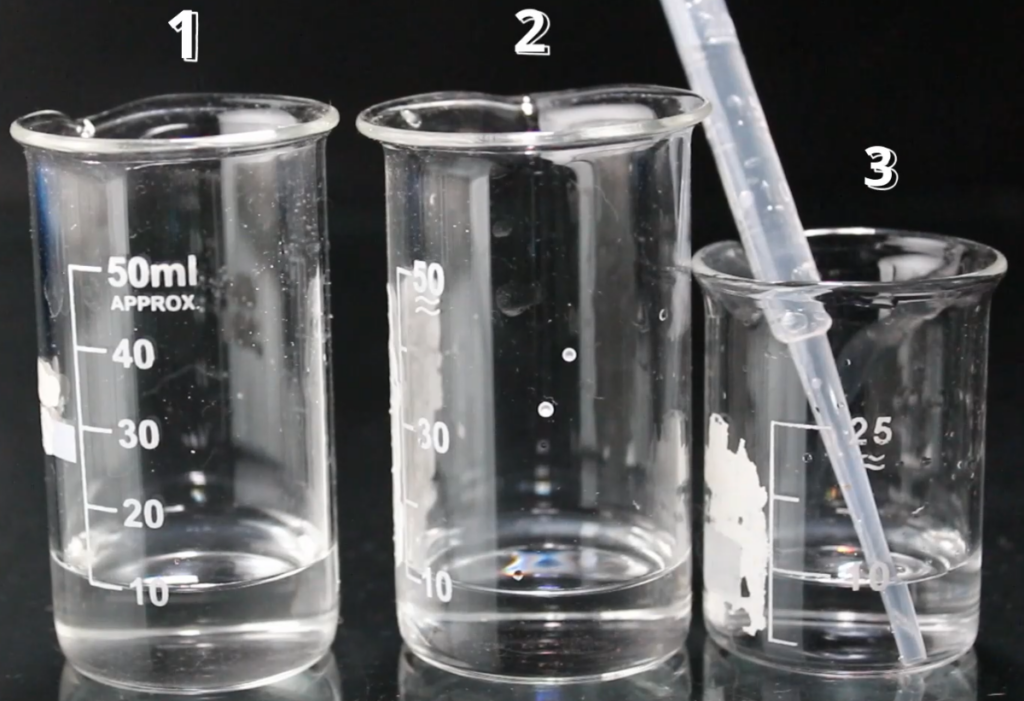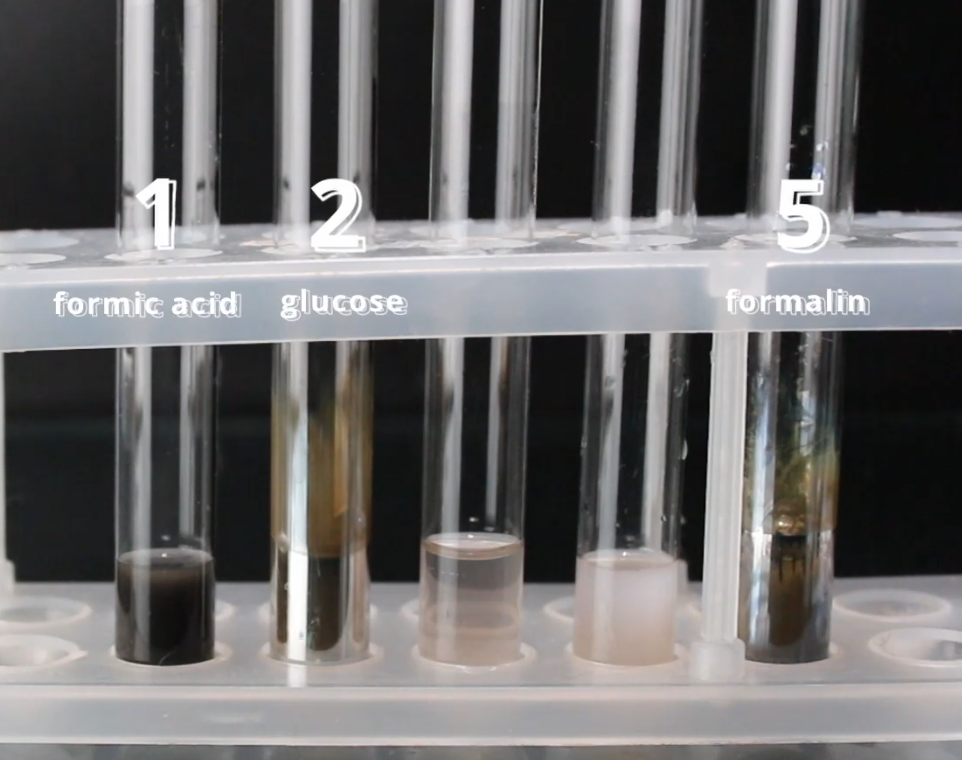- The process of creating a drug - May 23, 2023
- How do scientists model mental disorders in animals? - May 23, 2023
Introduction
Tollens’ test, also known as silver-mirror test, is a qualitative laboratory test used to distinguish between an aldehyde and a ketone. The Tollens’ test detects aldehydes, reducing sugars, polyhydroxyphenols, α-diketones, hydroxycarboxylic acids, primary keto alcohols, aminophenols, alkyl- and aryl-hydroxylamines, alkyl- and arylhydrazines, as well as formic acid. Tollens’ test uses a reagent known as Tollens’ reagent, which is a colorless, basic, aqueous solution containing silver ions coordinated to ammonia [Ag(NH3)2+]. It is prepared using a two-step procedure.
RCHO + 2[Ag(NH3)2]OH = RCOONH4 + 2Ag + 3NH3 + H2O
Tollen’s Test Procedures
At first, Tollens’ reagent is prepared.

Reagent #1 – silver nitrate 0.5 g is placed into the beaker #1 and brought to 10 ml (5% sln) volume with water
Reagent #2 – sodium hydroxide 1 g is placed into the beaker #2 and water is brought to 10 ml (10% sln).
Reagent #3 – aqueous ammonia solution 1 ml 20-25% is placed into the beaker #3. It is additionally diluted with water 10 times until 2-2.5% of ammonia solution is obtained.

10% Sodium hydroxide solution 5 drops (Reagent #2) are added to the 5% silver nitrate solution (Reagent #1), and then the prepared ammonia solution (Reagent #3) is added drop by drop until the silver oxide is completely dissolved. The ammonia excess affects on the reagent sensitivity. It is necessary to avoid the ammonia excess so that to keep Tollens’ reagent sensitivity.

The precipitation and dissolution of silver oxide occur in accordance with the following equations

This reagent has to be prepared directly before use. It can’t be stored for a long time by reason that the solution forms an explosive precipitate as the result of decomposition!
Tollens’ test is carried out with various samples. The resulting Tollens’ reagent is poured into 5 test tubes 2 ml each. To the Tollens’ reagent in 5 test tubes, couple drops of the following substances are added: 1 – formic acid, 2 – aqueous glucose solution, 3 – acetone, 4 – ethanol, 5 — formalin


Note: If the reaction isn’t work in the cold, the reagents should be slightly heated.
During the Tollens’ test, sample interaction with reducing agents is occurred and silver if formed as a black precipitate or shiny “mirror” on the reaction vessel walls, due to which it is received its poetic name “Silver-Mirror Test”.
On this video, the effects of the Tollens’ test with glucose solution can be watched. There is characteristic silver film on the vessel walls. This process is utilized to make shiny Christmas tree toys.

Mechanism of Tollens’ Test
Conclusion
The Tollens’ test, or silver-mirror test, remains an invaluable qualitative tool in distinguishing aldehydes from ketones and identifying other compounds capable of reducing silver ions. The formation of a characteristic silver film or black precipitate on the walls of the reaction vessel provides a visual confirmation of a positive result, showcasing the reducing properties of the tested sample. Though effective and straightforward, careful preparation and immediate use of the reagent are necessary to ensure safety and maintain the test’s reliability. This test not only serves as an important laboratory method but has also found practical applications, such as the creation of decorative silver coatings. The Tollens’ test continues to be a classic demonstration of redox chemistry, blending visual appeal with practical chemical analysis.

